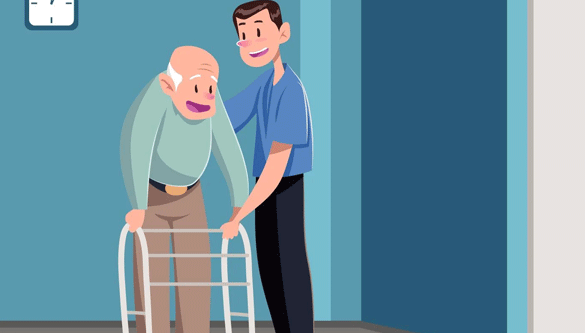Reliable, ongoing care is a growing need in many households today. With evolving demographics and shifting expectations around aging and wellness, in-home care has moved well beyond its traditional boundaries. Families are actively choosing support that not only addresses complex needs but also evolves with them. If you’ve been researching ways to maximize independence without sacrificing safety, comfort, or social engagement, understanding the benefits of in-home care is essential.
This post will explore the top benefits of In home care services, highlight recent trends, and share key statistics on why more families are opting for this model. By the end, you’ll have a clear sense of how ongoing, personalized support at home creates better outcomes and improves quality of life.
Changing Trends in Ongoing Care
Rising Popularity of Aging at Home
A recent survey by AARP found that nearly 77% of adults age 50 and older want to remain in their homes for the long term. This represents a major shift from previous decades. The trend is driven by a desire for independence, familiar environments, and the comfort of loved ones nearby.
Growth in Home-Based Services
Data suggests the home care industry has expanded rapidly. According to the U.S. Bureau of Labor Statistics, the demand for home health and personal care aides is projected to grow 22% through 2032. The aging population and greater recognition of the emotional benefits of home-based care contribute to this upward trend.
Benefits of Ongoing Support in Home Care
Ongoing in-home care offers a multitude of advantages, with each directly impacting daily life and long-term outcomes. Below are some of the most significant benefits, as supported by current research and lived experiences.
1. Personalized Attention
Unlike institutional care, in-home support provides personalized care plans tailored to individual needs, preferences, and routines. Every person is unique and ongoing in-home care adapts to evolving requirements. Whether assistance is needed with medication management, bathing, or coordinating daily activities, services are designed around the individual rather than a one-size-fits-all approach.
2. Improved Health Outcomes
Evidence shows that individuals receiving consistent care in their own homes often experience better overall health. Regular monitoring by trained professionals reduces the likelihood of health complications and emergency hospital visits. For example, those with chronic illnesses benefit from frequent check-ins that track symptoms and ensure timely interventions.
Chronic disease management at home has been found to decrease hospital admissions by up to 25%, according to a recent meta-analysis. Care providers can also notice subtle changes in health conditions earlier, which means faster medical responses and better prevention.
3. Enhanced Independence
A key reason for the surge in home care popularity is the ability to maintain autonomy. People receiving in-home support often continue with preferred activities, hobbies, and social circles. Regular care does not replace independence; rather, it reinforces it by ensuring assistance is available only where and when needed.
Adaptive equipment, mobility aids, and home safety modifications can be seamlessly integrated, encouraging confidence during daily activities. The result is increased satisfaction and a positive outlook, even during times of increased need.
4. Greater Comfort and Familiarity
Remaining in a familiar home environment brings significant psychological benefits. Studies show that individuals receiving care in their own homes experience less confusion and anxiety compared to those in clinical settings. Personal surroundings, cherished routines, and being near family all contribute to a reassuring atmosphere.
This sense of continuity is especially important for those with cognitive impairments, such as dementia or Alzheimer’s. Familiar sights, sounds, and routines help preserve memory and orientation, reducing agitation and emotional distress.
5. Strong Social Connections
Ongoing support at home helps maintain existing social networks. Care providers often encourage clients to engage with friends, family, and neighborhood groups. Social isolation is a common issue among older adults and those with limited mobility, but in-home care actively counters this.
According to a 2021 report from the National Academies of Sciences, Engineering, and Medicine, social isolation increases the risk of premature death by nearly 30%. Ongoing in-home care makes it easier to participate in activities, keep appointments, and maintain regular contact with loved ones. This dramatically improves emotional well-being and even physical health.
6. Support for Family Caregivers
Family caregivers carry significant emotional and physical burdens. Ongoing in-home care provides crucial respite, allowing family members to rest and recharge while knowing their loved one is receiving expert attention. This arrangement reduces caregiver stress, enhances family relationships, and ensures no one person is overwhelmed.
Access to professional support can also lead to better care strategies, as providers bring valuable knowledge and resources that benefit the whole family unit.
7. Cost-Effective Solutions
Contrary to what many assume, ongoing home care can be cost-effective when compared to institutional care, especially for those requiring part-time support or specialized services. Research from Genworth’s 2023 Cost of Care Survey shows in-home services remain competitive with, and sometimes less expensive than, nursing homes or assisted living facilities.
Additionally, the flexibility of in-home care allows families to choose only the services needed, which keeps costs controlled without sacrificing quality of care.
8. Focus on Prevention and Wellness
With a proactive, ongoing care plan, there’s a far greater emphasis on prevention and holistic wellness. Home care professionals work to build routines that include regular physical activity, nutritious meals, medication management, and preventive health screenings. This approach reduces risk of complications and improves overall quality of life long term.
Customized wellness plans are proven to motivate individuals and reinforce positive habits, resulting in better physical and mental health.
9. Seamless Transitions
For many, transitions from hospital to home are a vulnerable time. Without ongoing support, readmissions and complications are common. With a structured plan in place, professionals coordinate follow-up care, manage prescriptions, and facilitate communication between medical providers. This ensures smoother transitions, better recovery rates, and less disruption for everyone involved.
10. Peace of Mind for Everyone
Knowing ongoing support is available gives both recipients and their families peace of mind. Prompt responses during emergencies, regular updates, and transparent communication all contribute to a greater sense of security. Families can confidently focus on their own commitments, knowing their loved one is receiving attentive, professional care.






